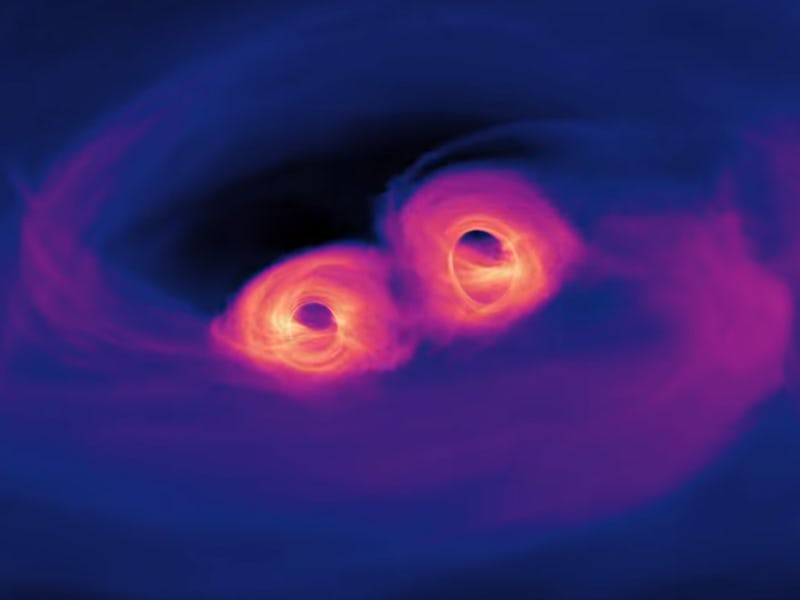Once undetectable, gravitational waves are coming in thick and fast
Not only can we listen to the echoes universe, but we can now understand what they are telling us, too.

On September 14, 2015, scientists detected the first gravitational wave signal.
The wave was the ripple of a merger between two black holes that collided 1.3 billion years ago.
It was a landmark discovery for astrophysics. Over the next four years, scientists detected 11 of these echoes in the cosmos, created by massive bodies in the universe moving at speed.
But once a rarity scientists had to scour the cosmos for, gravitational waves are now coming in thick and fast. On Wednesday, scientists at the Laser Interferometer Gravitational-Wave Observatory (LIGO) and the Virgo detector announced a further 39 gravitational wave signals were detected in just six months in 2019.
Gravitational waves are caused by the accelerated masses of cosmic beings, which send out waves at the speed of light. Scientists can listen in on these echoes of the cosmos thanks to the Laser Interferometer Gravitational-Wave Observatory (LIGO) detectors and the Virgo detector.
The announcement came as the LIGO and Virgo collaboration released the Gravitational-Wave Transient Catalog 2.
An expanding view — Frank Ohme, leader of an independent research group at the Max Planck Institute for Gravitational Physics in Hannover, Germany, recalls that prior to the first signal detection in 2015, the technology was just not good enough to see that far into the universe.
Between the years 2013-2015, the detectors' instruments were taken offline to do a major technological overhaul. It was the refresh they needed.
"We could look further out and pick out a signal that was above the noise," Ohme tells Inverse. "Reaching a sensitivity where we could finally see enough of the universe."
The majority of the new events captured by the detectors were caused by the collision of two black holes. But two may have been caused by binary neutron stars. And one of the latest discoveries, dubbed GW190426_152155, may also be a merger of a black hole of around six solar masses with a neutron star.
Scientists are able to distinguish between the sounds created by two black holes merging together and those created by neutron stars or other events by tracking the frequencies produced by those events, according to Ohme.
"It’s all about the sounds, how do I know that I'm speaking to my wife rather than a stranger on the phone," he says. "I can do this because I've learned the frequencies of people’s voices," he explains.
Gravitational waves sound sort of like a high-pitched chirp. The chirp comes in at a low frequency, but it is one that humans are still able to hear. Depending on the size of the chirp — essentially how loud it is — scientists can determine the mass of the objects producing the sound.
Don't see it, hear it — When it comes to observing the universe, astronomers were historically limited to using electromagnetic radiation or light to study objects in space. But as light travels towards us, it interacts with different elements in outer space, including dust, obscuring our view of the cosmos.
"Gravitational waves are fundamentally different, they don’t interact with stuff that’s in their way," Ohme says. "Whatever is in its way, it basically goes through."
Gravitational waves also offer astronomers a means to explore the 'dark side' of the universe — the invisible matter that would otherwise not show up using light-based observation techniques, such as the merger of two black holes.
"[The waves] come from the inside of the process, whereas light was produced from the outside of this collision," Ohme explains.
Part of the reason why there appears to be a slew of detections in such a short time span may be to do with how the detectors are maintained. The researchers manning the detectors periodically turn them off to do updates, before turning them back on. Each time they turn them back on, these instruments are that much more sensitive than before.
With each hard reset, new discoveries and detections could become common. In the future scientists might even be listening to a new one every day, Ohme says — an incredible feat considering that just five years ago, gravitational waves were the preserve of theory.
This article was originally published on